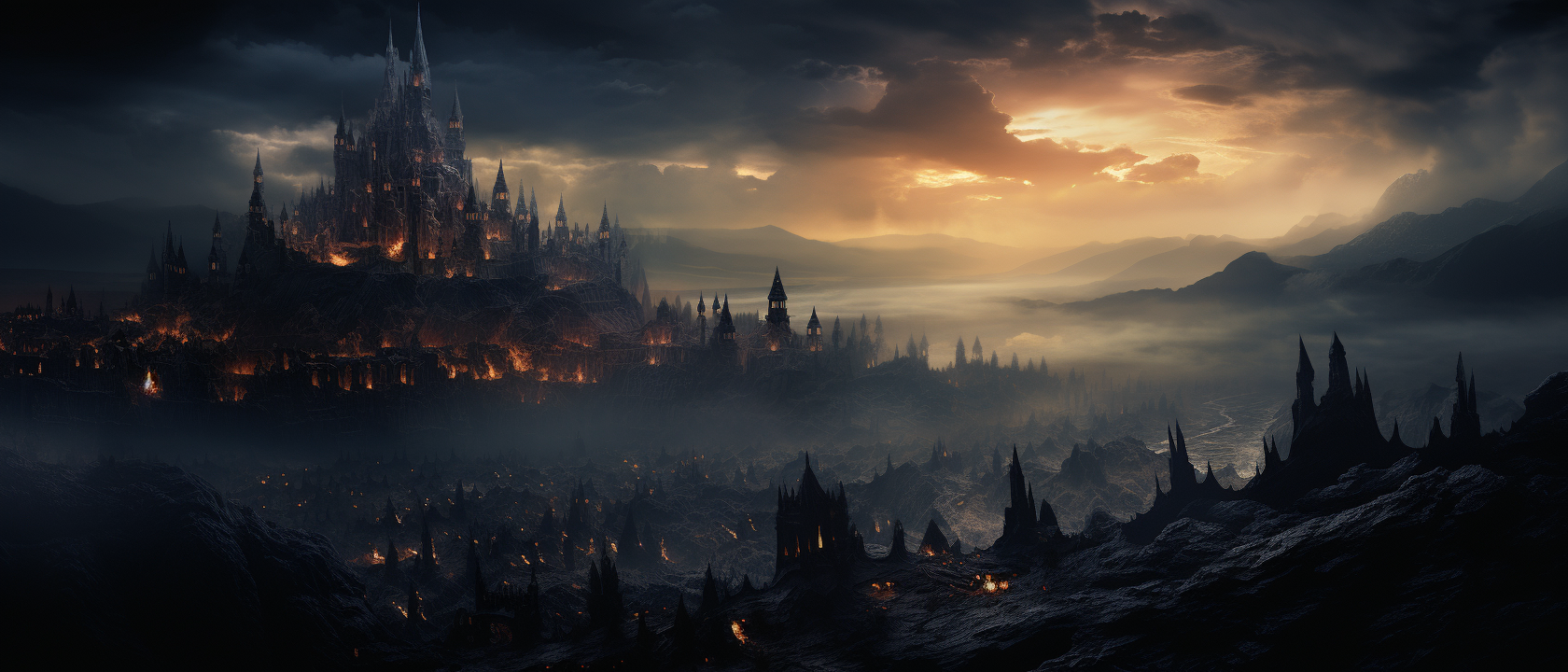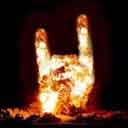So, you come to Mearis for... what, the women? The gold, the spices? The fish or the military machine or how we love? For our craftsmanship, our dishes, our food? For our traditions, our trade, our very soul?
Friend, you are in the right place.
— Guide
Mearis is the capital of
Pisocenia and is located in the southeast region of
Pisocenia, the Desert Land, where it is sitting on water and sand alike. Its huge port is the main entrance to the ocean and its huge doors are gaping at the burning sands of
Pisocenia.
Depending on which side of the city you are arriving your first impression may vary. Mearis is the first settlement the former pilgrims founded and they arrived on boats and ships. The port is the most advanced and crowded location in the city besides the markets and the palace itself.
Port of Mearis
The port is one of the two beating hearts of the city. It is not only a port for small and large ships or even our warships; no, there are also workshops alongside with the great warehouses, most of them supporting everything floating on the ocean. Ropemakers, woodworkers, sailmakers, you name it.
If you are on the hunt for specific goods and can't find them here, you will at least find someone who knows a thing or two.
And for services... you can find as many in the night as you would find in broad daylight. Watch your steps, your feet might guide you to places only found in your wildest dreams.
— Grinning Guide to a flock of tourists
Your first impression - and probably everyones first words arriving at Mearis port - is probably "damn, this is huge". This is because the port of Mearis is really huge and spans nearly one kilometre in width alongside the coast and approximately threehundred meters into the city, an area which is mostly known as the "Hammer's Belt" because of all the workshops there.
There are eleven big shipyards over the full width of the port. Each one is outfitted to build, maintain and repair even the biggest & heaviest warships and each one has around twohundred to threehundred employees. Located in the middle of the belt sits the biggest shipyard, only used by the palace, dedicated to the Vacant. Most of the time the shipyard is occupied with repairs or altering the existing royal flagship (or building a new one when the old one is beyond repairs).
Between those eleven shipyards are a few dozens more, mostly in private hands to build smaller vessels for fishing, seashell gathering and much more. If you have the coin, the port of Mearis has a ship for you.
The Market(s)
Speaking of aquiring things, shiny, necessary or not, lets head to the market(s), shall we?
Why what? Oh, why I speak market(s) this way? Because you have a vast area which is the marketplace itself, but you have circles over circles of different kinds of markets. Spices, clothings, materials, even pearls and gold and silver. Looks like one of our mosaics from above.
— Guide to a customer
Speaking of things you need. Even the poor can come the the market(s) and buy things, sometimes they get food and materials for free.
The market(s) are a mosaic of areas inside the marketarea itself. They consist of smaller circles so every area of living in the city is touched. There are circles inside circles, crossing circles, painting a picture which might get a little bit confusing for tourists.
Depending on the time of the year and the resources at hand the market(s) may vary from time to time. Normally a design is set for the next few months, spots assigned by the palace itself.
If you can't find a specific thing on the market, it doesn't exist or is probably in the palace.
The Palace
You have an invitation? No? Oh, too bad, but then you are not allowed to enter. Please leave. — Guard to a curious tourist
The palace is not open for outsiders or tourists. Most of the citizens can come in and have a little chat with the employees of the palace, but even those can't go in the palace and speak with the canteros or the Vacant.
But if they could they would see great halls out of white marble and wood, decorated with silver, gold and silken drapes. They would see rooms fitted out for a king but are only rooms for guests. If they could see the round canopy beds with drapes out of pricey linen or silk, they would not trust their eyes.
If they could see... but no, they couldn't see inside the palace, couldn't see the wealth and the deadly traps right before the chamber of gold. Couldn't see the highly trained guards and their cold eyes, ready to kill and to die for the Vacant. They only can see the pillars and the heigh ceilings and the white and blue towers with their dome roofs.
Military & Defences
The military consists mostly out of mounted troops. They have a huge advantage on the dry and sandy planes of
Pisocenia and can wield both bow and sword with deadly precision. They are not many, but they are the hard - and fast hitters of the military.
The rest of the forces is divided into archers and swordsman with a distribution of 2:1, so the city is well-defended with a huge amount of arrows.
In case of defences Mearis has two walls, the outer and the inner wall. Both are well defended and up to fifteen meters high which gives the archers the advantage of the higher ground. Every twenty meters stands a tower with a catapult or a ballista on top of it. Stones and arrows can get thrown hundreds of meters against the possible enemy.
The same goes for the port. The port itself is not guarded by either of the two walls, but has a line of towers a few hundred meters before the port, manned with archers and ballistae and catapults. The secret weapon of this defense line is the heavy iron chain which can crush ships entirely just on contact. It can get pulled up to the surface when needed and is divided in various sections to minimise the threat of sabotage.
Pretty, isn't it? When it is not demons we are facing, the city can withstand every attack and we can see forces coming kilometres away. Oh, small advice: do not mess with the men on the ballistae or catapults. They hate it when someone is near their babies and their hammers can smash your armor as easily as you can kill them with your sword. But they are good drinkers, so maybe try this. — Officer to a new guard
The Underground (where does the poop go?)
The Underground is divided into two parts: the actual Underground with pipes, canals and supply routes and the... well, the Underground which includes the black market, some very exclusive whorehouses, assassins, shady merchants and people who can connect other people to each other. Some in a more literal, some in the more methaporical way.
The actual Underground is a thing which was built over the course of a hundred years, nearly twenty of it were to figure out how to get the salty ocean water up to the palace and down from there. They use a two-way system: a water wheel brings up huge buckets of water to the palace and fills a huge bassin. This bassin has two exists, one on the left side and one on the right side.
The exit on the left side is pointing in the direction of the water wheel and the water flows downhill, filling up buckets inside the mechanism of the water wheel to keep it moving.
The right side of the bassin lets out a constant stream of seawater, hundreds of litres per minute. This water runs down with a strong current and floods the canals, flushing out poop, rubbish and other elements out into the ocean.
To keep the city clean there are four holes in the ground and four houses besides the holes. Inside the houses you can clear your bowels without hesitation. The holes are for those people with (mostly poop-filled) buckets so they can throw everything into the holes and on this way into the canals.
Blockage? Yeah, we sometimes have those. It is pretty dark underground and only a few laterns are burning because of the gases. Too much heat or a spark and the whole city is going to hell. But no, we Canalrats deal with this everyday and we know the signs. Yes, it is a very dirty job, but we get paid quite good. Not as good as a merchant or a guard, but we can eat nice food and wear good clothes, so I don't complain. — Older Canalrat in an interview while cleaning his broom
Small words on history
The history of Mearis is a one written in blood, internal and external. There are only three major incidents which let the city to ruin, the last one was the incident with the demons of the
Spiral.
There were two wars, one called "The Broodbrother War" and the other one was "The Three-Day War".
The Broodbrother War
This war was as bloody as it was filled with honour and the will to live. Dozens of clans out in the desert were not satisfied and discontented with the way of the Vacant, especially with taxes and trade rules.
They attacked trade routes and transports, demanding better supplies, better tax rates and the right to vote on public votings (which were only allowed for citizens of Mearis at this time). The Vacant at this time was stubborn and denied them their rights. With guerilla tactics and efficiency the rebels killed a few hundred soldiers with next to nothing losses, apart from being outnumbered by the mounted forces.
But the rebels won in the end by cutting off trade routes, denying taxes and manipulating defences so they could enter the city of Mearis with very few losses. Because of many families and bloodlines residing inside and outside the city, after the signing of the peace treaty it was called "The Broodbrother War".
The Three-Day War
The Three-Day War was as brutal as it was short. A conglomerat of magic users, dissatisfied merchants and chaosbringers wanted to crack open the defences of Mearis to raid all of its wealth it has accumulated over the last decades.
The attackers brought down a fair amount of the first wall on the first day with potent magic and catapults. The attack was so fierce that not even the mounted troops could open a breach.
On the second day the defenders layed fire onto the first ring, burning away everything including citizens, houses, animals and those of the attackers who weren't fast enough to run from the firestorm.
On the third day the Vacant led a sally with the mounted troops and a small amount of infantry into the first ring, laying waste to the encampments and right into the heart of the headquarter, slaying the leaders. Broken and without leadership the rebels retreated, ending the war on the sundawn of the third day. This is why it is called "The Three-Day War".
Someone said demons?
The last decimating attack was the one caused by the incident at
Ganguk with
the Spiral. The demons came without warning, with bloodthirsty screams, wings, sharp claws and hungry eyes. Hundreds of them, with wings; two, four or sometimes eight legs; up to ten eyes and skin in black and red and blue and white. They killed at least two quarter of the military and more than half of the civil population before magicians and mounted troops killed nearly every demon they could reach, ending the bloodshed. Most of the defences were untouched, but the city layed in ruin, even the palace was burning.
This was the event the Vacant agreed to the
Electorial Congregation to send troops for the
Black Fortress and resources in gold, silver, arrows, food and drinks to supply the Fortress and the Black Fortress Sentries so that such an event would never occur again.







I came for the spicy golden women... yourself?
I came for the shinies. That includes them golden women and ships and gems and... for Mearis! :D
lol :), was expecting being there of My Precious....